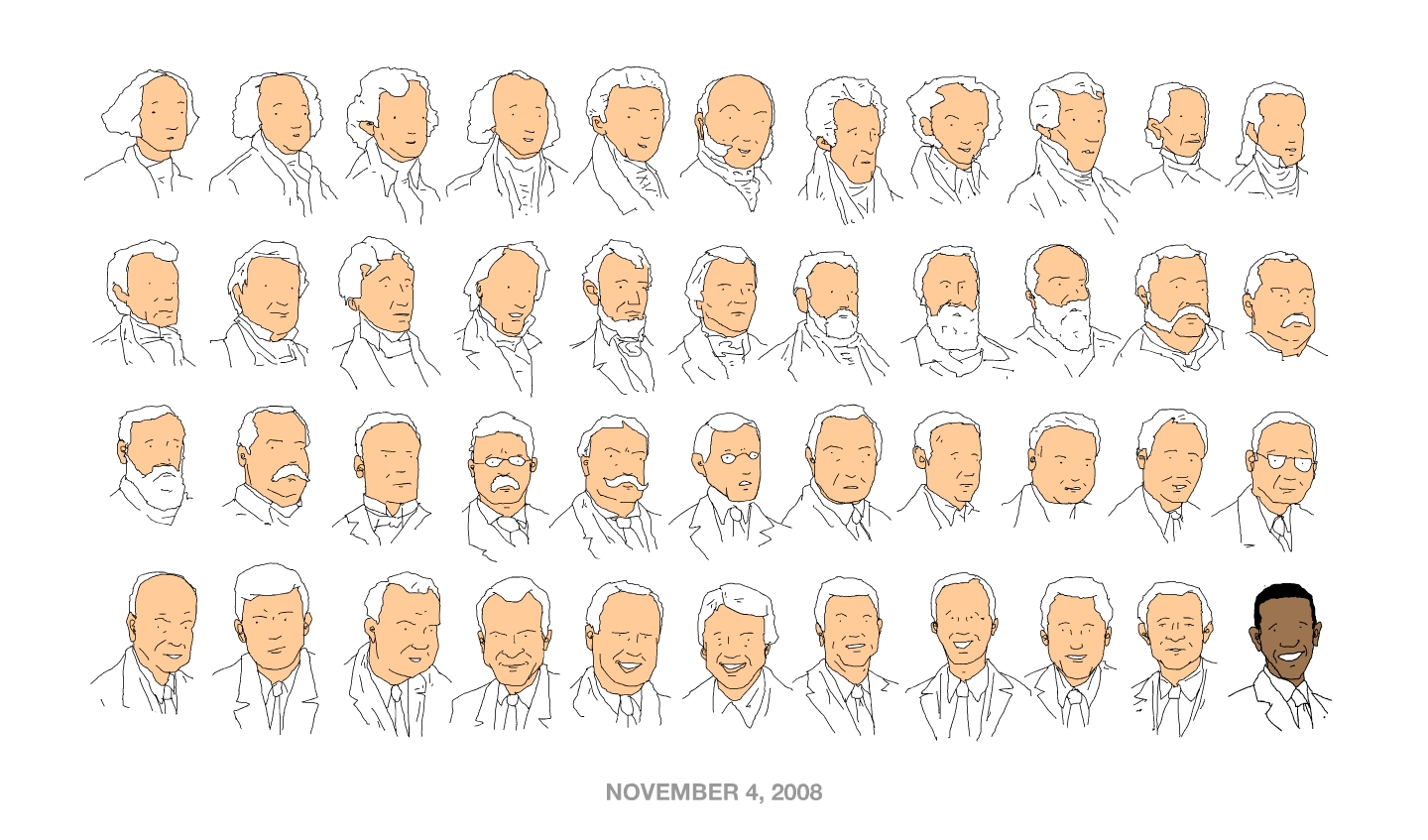10 Things Small Business Owner Should Do In 2009
Great advice for any business person to consider and "do" in 2009. We can all do better at understanding how our customers view us and improving on the service or product we offer them.

". . .address the privacy and security challenges related to electronic health information exchange through a network for all persons, regardless of the legal framework that may apply to a particular organization. The goal of this effort is to establish a policy framework for electronic health information exchange that can help guide the Nation's adoption of health information technologies and help improve the availability of health information and health care quality. The principles have been designed to establish the roles of individuals and the responsibilities of those who hold and exchange electronic individually identifiable health information through a network."Along with the Nationwide Privacy and Security Framework the Department of Health and Human Services (HHS) has issued The Health IT Privacy and Security Toolkit. The Toolkit includes new HIPAA Privacy Rule guidance documents developed by the ONCHIT and the Office for Civil Rights (OCR) to help facilitate the electronic exchange of health information.

There is nothing transformational or disruptive about EMRs because they have been designed to meet the functions and features of a status quo business model -- not the collaborative and participatory capabilities required of the business models of the future health system.
In this next installment of the conversation, I’d like to suggest some specific capabilities that health IT ought to empower doctors and health care teams to perform on behalf of, and in collaboration with, their patients.
I’m suggesting that we go back to the drawing board and design health IT that is truly a good fit for doctors and patients in a system that rewards quality, safety, and efficiency of care while working to keep people healthy, instead of simply adding up the charges when they’re sick.
I'm involved on a number of fronts looking at health information models for West Virginia that will improve the delivery of care and reduce the costs. Dr. Kibbee's comments and thoughts are valuable for others looking at these same issues.
Tip to Ted Eytan on the post.
We make choices throughout our lives - where we want to live, what types of activities will fill our days, with whom we spend our time. These choices are often a balance between our desires and our means, but at the end of the day, they are decisions made with intent. But when it comes to how we want to be treated at the end our lives, often we don't express our intent or tell our loved ones about it.This has real consequences.
73% of Americans would prefer to die at home, but up to 50% die in hospital. More than 80% of Californians say their loved ones “know exactly” or have a “good idea” of what their wishes would be if they were in a persistent coma, but only 50% say they've talked to them about their preferences. But our end of life experiences are about a lot more than statistics. They’re about all of us. So the first thing we need to do is start talking.
Engage With Grace: The One Slide Project was designed with one simple goal: to help get the conversation about end of life experience started. The idea is simple: Create a tool to help get people talking. One Slide, with just five questions on it. Five questions designed to help get us talking with each other, with our loved ones, about our preferences. And we’re asking people to share this One Slide – wherever and whenever they can…at a presentation, at dinner, at their book club. Just One Slide, just five questions. Lets start a global discussion that, until now, most of us haven’t had.
Here is what we are asking you: Download The One Slide and share it at any opportunity – with colleagues, family, friends. Think of the slide as currency and donate just two minutes whenever you can. Commit to being able to answer these five questions about end of life experience for yourself, and for your loved ones. Then commit to helping others do the same. Get this conversation started. Let's start a viral movement driven by the change we as individuals can effect...and the incredibly positive impact we could have collectively. Help ensure that all of us - and the people we care for - can end our lives in the same purposeful way we live them. Just One Slide, just one goal. Think of the enormous difference we can make together.
(To learn more please go to www.engagewithgrace.org. This post was written by Alexandra Drane and the Engage With Grace team)
 Tim Sturgill, MD JD at symtym provides an explanation and insight into the potential shift from silo'ed EHRs controlled by multiple providers to a Health Cloud centralized around a single PHR.
Tim Sturgill, MD JD at symtym provides an explanation and insight into the potential shift from silo'ed EHRs controlled by multiple providers to a Health Cloud centralized around a single PHR. Justen Deal in his post, Purkinje: stealth fighter, introduced me to another SasS focused Electronic Health Record (EHR) and practice management service provider called Purkinje. Interesting read on the company and its history.
Justen Deal in his post, Purkinje: stealth fighter, introduced me to another SasS focused Electronic Health Record (EHR) and practice management service provider called Purkinje. Interesting read on the company and its history. On this Veterans Day I give thanks to all military veterans who have served their county. Please take time today at the 11th hour of the 11th day of the 11th month to thank a family member, friend or colleague who served their county.
On this Veterans Day I give thanks to all military veterans who have served their county. Please take time today at the 11th hour of the 11th day of the 11th month to thank a family member, friend or colleague who served their county.
 rebeccaburch @bobcoffield Insurance coverage -- whether you have ins. or not, affordability is often a deal-breaker for needed procedures/meds/etc... about 2 hours ago from web in reply to bobcoffield
rebeccaburch @bobcoffield Insurance coverage -- whether you have ins. or not, affordability is often a deal-breaker for needed procedures/meds/etc... about 2 hours ago from web in reply to bobcoffield  CandidChristian @bobcoffield Solid information. Not understanding what's covered, what isn't, what the bill will be ultimately. about 2 hours ago from twhirl in reply to bobcoffield
CandidChristian @bobcoffield Solid information. Not understanding what's covered, what isn't, what the bill will be ultimately. about 2 hours ago from twhirl in reply to bobcoffield  CandidChristian @bobcoffield ...other than cost, of course! about 2 hours ago from twhirl in reply to bobcoffield
CandidChristian @bobcoffield ...other than cost, of course! about 2 hours ago from twhirl in reply to bobcoffield  CandidChristian @bobcoffield Yes...transparency in the entire process, from enrolling to billing and everything in between. Would love to see it happen. about 2 hours ago from twhirl in reply to bobcoffield
CandidChristian @bobcoffield Yes...transparency in the entire process, from enrolling to billing and everything in between. Would love to see it happen. about 2 hours ago from twhirl in reply to bobcoffield  MtnLaurel @bobcoffield my issue: standard coverage/rules across insurers about 2 hours ago from twitterrific in reply to bobcoffield
MtnLaurel @bobcoffield my issue: standard coverage/rules across insurers about 2 hours ago from twitterrific in reply to bobcoffield  lineberg @bobcoffield | we don't trust the insurance co's. their billing is confusing. their service is poor. lack of predictability about 1 hour ago from mobile web in reply to bobcoffield
lineberg @bobcoffield | we don't trust the insurance co's. their billing is confusing. their service is poor. lack of predictability about 1 hour ago from mobile web in reply to bobcoffield  chipwv @bobcoffield -- let's say you have a major disease or illness and have no insurance....well, you are screwed and that's all there is to it! about 1 hour ago from web in reply to bobcoffield
chipwv @bobcoffield -- let's say you have a major disease or illness and have no insurance....well, you are screwed and that's all there is to it! about 1 hour ago from web in reply to bobcoffield  chipwv @bobcoffield...#1 problem? Too many docs say...well, that's the health system, deal with it.. and btw you won't like the alternatives about 1 hour ago from web in reply to bobcoffield
chipwv @bobcoffield...#1 problem? Too many docs say...well, that's the health system, deal with it.. and btw you won't like the alternatives about 1 hour ago from web in reply to bobcoffield  domjbs @bobcoffield #1 billing. #2 ease of seeing specialists about 1 hour ago from TwitterFox in reply to bobcoffield
domjbs @bobcoffield #1 billing. #2 ease of seeing specialists about 1 hour ago from TwitterFox in reply to bobcoffield  JasonKeeling @bobcoffield | Still dealing with family doc. / insurance co. billing matter. Customer service from doc's staff = FAIL. about 1 hour ago from web in reply to bobcoffield
JasonKeeling @bobcoffield | Still dealing with family doc. / insurance co. billing matter. Customer service from doc's staff = FAIL. about 1 hour ago from web in reply to bobcoffield"It's a protein-lined metal stent that the body thinks is normal artery," Bates said. "Instead of the body thinking it's a foreign body, it lines it with normal cells real quickly. It allows the body and arteries to function normally."Congratulations to Dr. Bates on his creativity and forward thinking to bring better heart care to West Virginians and others around the globe.
We're not stopping nature from doing its thing," said Bates, who heads Nexeon's offices in Charleston and Carlsbad, Calif. "We're helping nature. The body doesn't recognize [the stent] as something that's not supposed to be there."About 65 percent of patients across the country now receive drug-releasing stents during cardiac catheterization procedures to open arteries. The remainder have bare-metal stents placed in their vessels.
 Val Jones, M.D. has a new home at Getting Better with Dr. Val. Congratulations to Dr. Val on the launch of her hew health care blog.Check out her welcome message and the official press release. If you already follow Dr. Val don't forget to update your blogroll.
Val Jones, M.D. has a new home at Getting Better with Dr. Val. Congratulations to Dr. Val on the launch of her hew health care blog.Check out her welcome message and the official press release. If you already follow Dr. Val don't forget to update your blogroll. I believe we, as the eHealth community, need to focus on two major goals: 1) solve patients’ problems, and 2) create business models that allow us to do #1.Successful companies must show real and tangible benefits directly to the patient consumer. As one who regularly participates in the health information discussion and debate as West Virginia moves forward with its health information network infrastructure -- I often try to step back and ask, like Mr. Heywood, the simple question, "does this help the patient -- why and how?"
Copyright © 2012 The Readmore 2014 . All rights reserved.
Super SEO created by Blogger Tuts | Published by GalleryBloggerTemplates.com